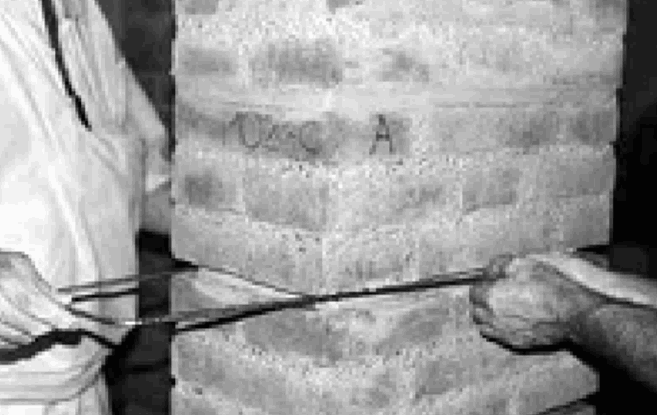Binda [1], C. Modena [2], A. Saisi 1, R. Tongini Folli 1, M.R. Valluzzi 2
- Dipartimento di Ingegneria Strutturale, Politecnico di Milano, Piazzale L. da Vinci 32, 20133 Milano, binda@stru.polimi.it, saisi@stru.polimi.it, tongini@stru.polimit.it
- Dipartimento di Costruzioni e Trasporti, Università di Padova, via Marzolo 9, 35131 Padova, modena@caronte.dic.unipd.it, valluzzi@caronte.dic.unipd.it
ABSTRACT
The serious risks of failure of historic masonry structures when subjected for long time to very high compressive stresses (i.e. 50 to 70 % of the experimental peak stress) have been recognised following recent collapses. The authors classified several cases where this situation occurs: they actually represent a relevant part of the architectural heritage, being typically towers (bell and civic), pillars of churches and buildings supporting vaults and domes and fortification walls.
The current repair/strengthening techniques proved to be in such cases substantially ineffective (this is the case for example of injections and of local reconstruction) or excessively invasive.
What is really needed in fact, in the authors opinion, is rather than increase the compressive strength of masonry, to improve its response to long term actions by counteracting the “damaging” phenomenon of the progressively developing “diffused” cracks (creep like behaviour). In this respect, the authors suggest a global improvement by tie roads and locally the insertion of reinforcement in bed joints. This repair technique is already in use for other purposes, typically to counteract expansion cracks in facing clay masonry walls in northern European countries, and can be successfully used to control the cracks formation and development of highly compressed masonry.
Preliminary laboratory tests that have been already carried out on wallettes subjected to monotonic loading and loading by steps of constant load (pseudo creep test), have shown that the above use can fulfil the requirements. Test results and preliminary numerical investigations indicated the way how the intervention can be designed by appropriately choosing the material properties and the dimensions and positions of the strengthening bars. In field applications, subjected to continuos monitoring of the cracks width after the intervention, already demonstrated the feasibility of the techniques and his positive effects.
Based on the previous consideration a systematic investigation has been started, in order to study more in detail the effect of a repair technique, specifically finalised to the dilation control, in the long term mechanical damage of the masonry. The above research and field application experiences are presented and commented.
Key words: brick masonry, creep behaviour, bed joint reinforcement, experimental tests
histor07



